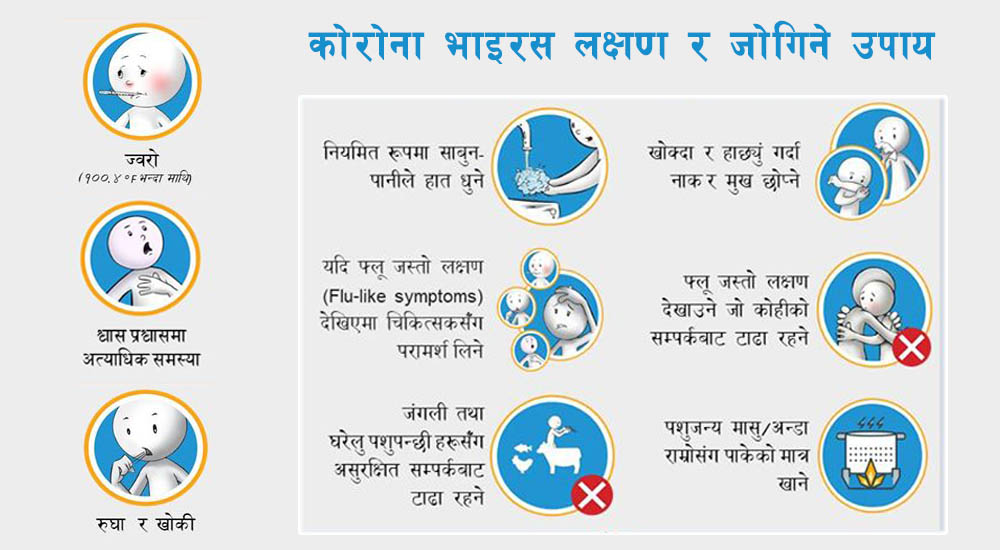Novel Coronavirus
(Knowledge to share about an emerging infectious
diseases from CDC)
2019 Novel Coronavirus (2019-nCoV) is a virus
(more specifically, a coronavirus) identified as the cause of an outbreak of respiratory
illness first detected in Wuhan, China. Early on, many of the patients in the
outbreak in Wuhan, China reportedly had some link to a large seafood and animal
market, suggesting animal-to-person spread. However, a growing number of
patients reportedly have not had exposure to animal markets, suggesting
person-to-person spread is occurring. At this time, it’s unclear how easily or
sustainably this virus is spreading between people. The latest situation summary
updates are available on CDC’s web page 2019 Novel Coronavirus, Wuhan, China.
Symptoms
Patients with confirmed 2019-nCoV infection have reportedly had
mild to severe respiratory illness with symptoms of:
- fever
- cough
- shortness of breath
CDC believes at this time that symptoms of 2019-nCoV may appear in
as few as 2 days or as long as 14 after exposure. This is based on what has
been seen previously as the incubation period of MERS viruses.
The latest situation summary updates are available on CDC’s web
page 2019 Novel Coronavirus, Wuhan, China.
How it Spreads
Coronaviruses are a large family of viruses that are
common in many different species of animals, including camels, cattle, cats,
and bats. Rarely, animal coronaviruses can infect people and then spread
between people such as with MERS and SARS. Many of the patients in the pneumonia
outbreak caused by 2019-nCov in Wuhan, China had some link to a large seafood
and live animal market, suggesting animal-to-person spread. However, a growing
number of patients reportedly have not had exposure to animal markets,
indicating person-to-person spread is occurring.
When person-to-person spread has occurred with MERS and
SARS, it is thought to have happened via respiratory droplets produced when an
infected person coughs or sneezes, similar to how influenza and other
respiratory pathogens spread. Spread of SARS and MERS between people has
generally occurred between close contacts.
It’s important to note that how easily a virus spreads
person-to-person can vary. Some viruses are highly contagious (like measles),
while other viruses are less so. It’s not clear yet how easily 2019-nCoV
spreads from person-to-person. It’s important to know this in order to better
understand the risk associated with this virus.
There is much more to learn about the transmissibility,
severity, and other features associated with 2019-nCoV and investigations are
ongoing. The latest situation summary updates are available on CDC’s web page 2019 Novel Coronavirus, Wuhan, China.
Prevention & Treatment
Prevention
There is currently no vaccine to prevent 2019-nCoV
infection. The best way to prevent infection is to avoid being exposed to this
virus. Right now, 2019-nCoV has not been found to be spreading in the United
States, so there are no additional precautions recommended for the general
public to take. However, as a reminder, CDC always recommends everyday
preventive actions to help prevent the spread of respiratory viruses,
including:
- Wash your hands often with soap and water
for at least 20 seconds. If soap and water are not available, use an
alcohol-based hand sanitizer.
- Avoid touching your eyes, nose, and mouth
with unwashed hands.
- Avoid close contact with people who are
sick.
- Stay home when you are sick.
- Cover your cough or sneeze with a tissue,
then throw the tissue in the trash.
- Clean and disinfect frequently touched
objects and surfaces.
These are every day habits that can help prevent the
spread of several viruses. CDC does have specific guidance
for travelers.

Treatment
There is no specific antiviral treatment recommended
for 2019-nCoV infection. People infected with 2019-nCoV should receive supportive
care to help relieve symptoms. For severe cases, treatment should include care
to support vital organ functions.
People who think they may have been exposed to
2019-nCoV should contact your healthcare provider immediately.





















